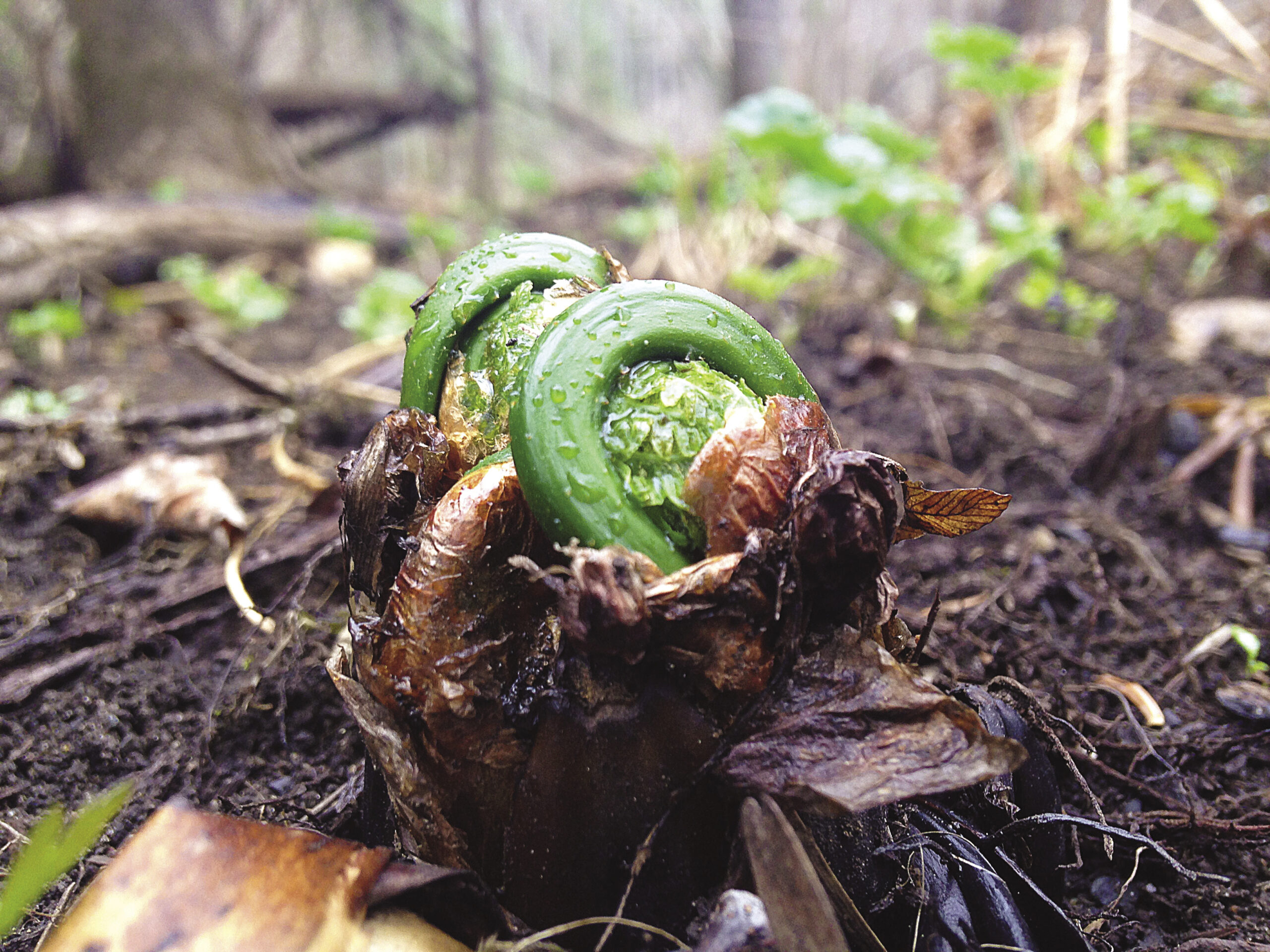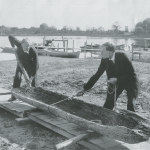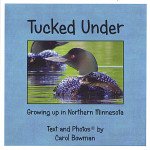Before planting the garden, or even working the soil, there are certain foods growing abundantly in wild spaces. As the snow melts, the rivers swell and overnight temperatures remain consistently above freezing, crowns of emerald-green ferns begin to peek through the forest floor. Fiddleheads are among the first flush of wild foods to become available in the spring.
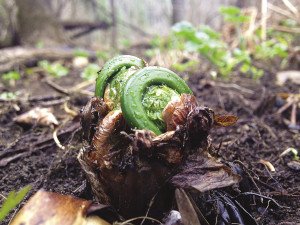
Fiddleheads budding through the forest floor. | KENDAL DONAHUE
For anyone who forages for wild food, this is a really exciting time. Hunting for fiddleheads is an easy and accessible activity that can be done by people of all ages. You don’t need many tools, either. A simple utility knife and a plastic bag or container is really all that’s required.
Many riparian zones (areas near water) are host to various species of wood ferns. While many of them are technically edible, ostrich ferns (Matteuccia struthiopteris) are the ideal food, and are a traditional dish across Canada, especially in Quebec and New Brunswick. The young, coiled fronds look like the scroll of a violin as they are growing out of the ground, hence the name fiddlehead.
Secret Spots
Last spring, I brought my two-year-old niece fiddlehead picking—she was happy just playing in the woods with dead leaves and sticks most of the time, but she picked the odd handful of young ferns and proudly dropped them into the bag. This year will be a lot more rewarding, now that she’s a little older and can really get into the hunt.
Serious foragers tend to keep the location of their fiddlehead patches a secret, but I was lucky enough to be shown where they grow by my grandparents. They’ve been picking fiddleheads for years at a spot that’s a 30 minute drive from their home. There’s also a small patch of ferns growing along a creek a few blocks from where they live, so they use that area as an indicator of when they are ready. Once the creek side fiddleheads start coming up, they make a trip across town to go for the jackpot.
After learning where fiddleheads grew and how to identify them, I was on the lookout for them everywhere. It’s one of the effects of learning a new wild food: once you get to know its habitat and what to look for, you get a sense for it and incidentally spot it everywhere.
I was walking my dog on a new trail last spring and came across a massive patch of them, which made for a big reward. It was a little late in the season—the coils were starting to unfurl and look a little hairy—but I was able to pick a couple of bags and take them home for dinner, being careful to sustainably harvest only three fiddleheads (about half) per cluster.
Fine Dining
When it comes to eating these vitamin-rich greens, which are considered a delicacy in some parts of the world, I like to boil them in a pot of water for 7 minutes or so, then drain and sautée in butter, sea salt and a hint of lemon at the end. Less is really more in this case, and it doesn’t take much to create a delicious side dish that goes really well with roasted deer or wild game. If you enjoy asparagus, chances are you’ll like the earthy taste of fiddleheads.
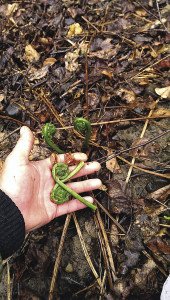
Right now, my freezer has three types of wild game, a few backyard chickens, locally-pastured pork, some rhubarb, and whatever vegetables are left from last year’s garden harvest. But my frozen fiddlehead supply is dwindling. I can’t wait for warm, sunny afternoons so I can replenish my stock.
I love growing food, but what I love most about foraging is that a lot of the work is already done. Unlike a garden that has to be tilled, fertilized, weeded, sown and worked every year through an incredible amount of planning and labour, wild foods abandon all of the rules. They thrive among other plants, coexist with competitors and haphazardly grow in a symphony of chaotic harmony.
With any wild food, harvesting sustainably is a critical part of foraging. Just because it grows wild does not mean it’s an infinite resource. It’s easy to get excited when fiddleheads poke through the ground in what seems to be an endless supply. But take caution and consider what might happen if everyone foraged for sustenance in our shared wild spaces and habitats.
That may not seem like the ideal environment if you want specific yields, straight rows and identical looking crops, but that isn’t what wild is. Wildness takes you on adventures that are often humbling, unpredictable and really, just a whole lot of fun.


